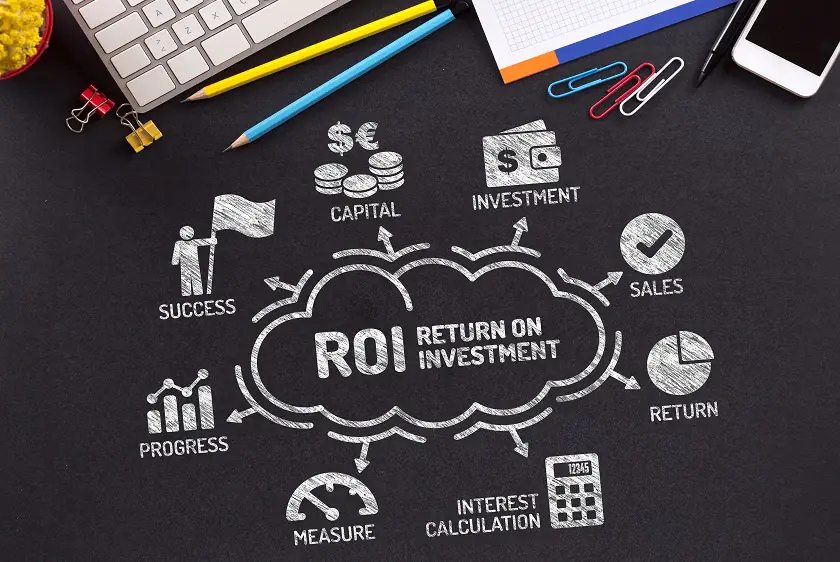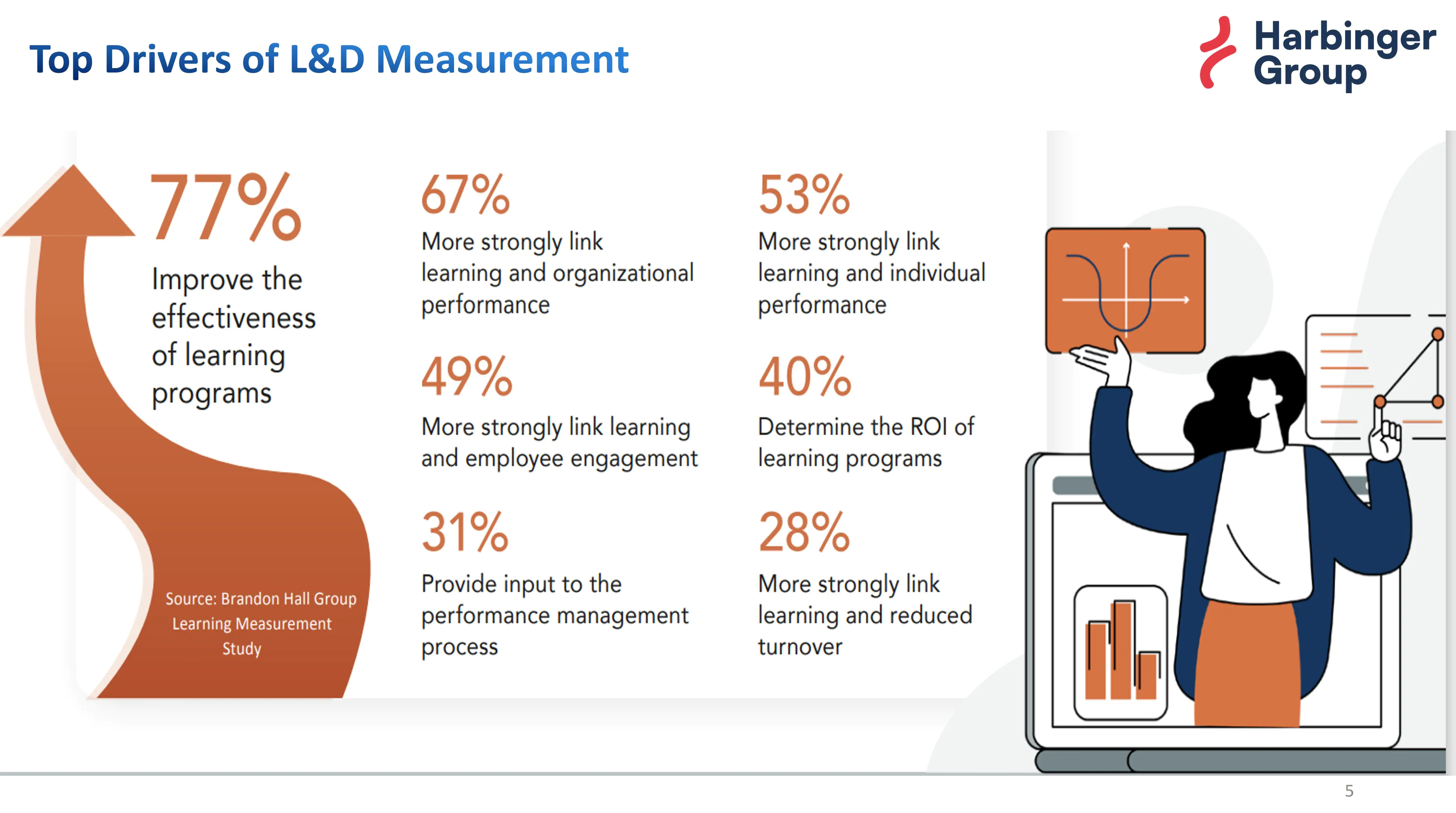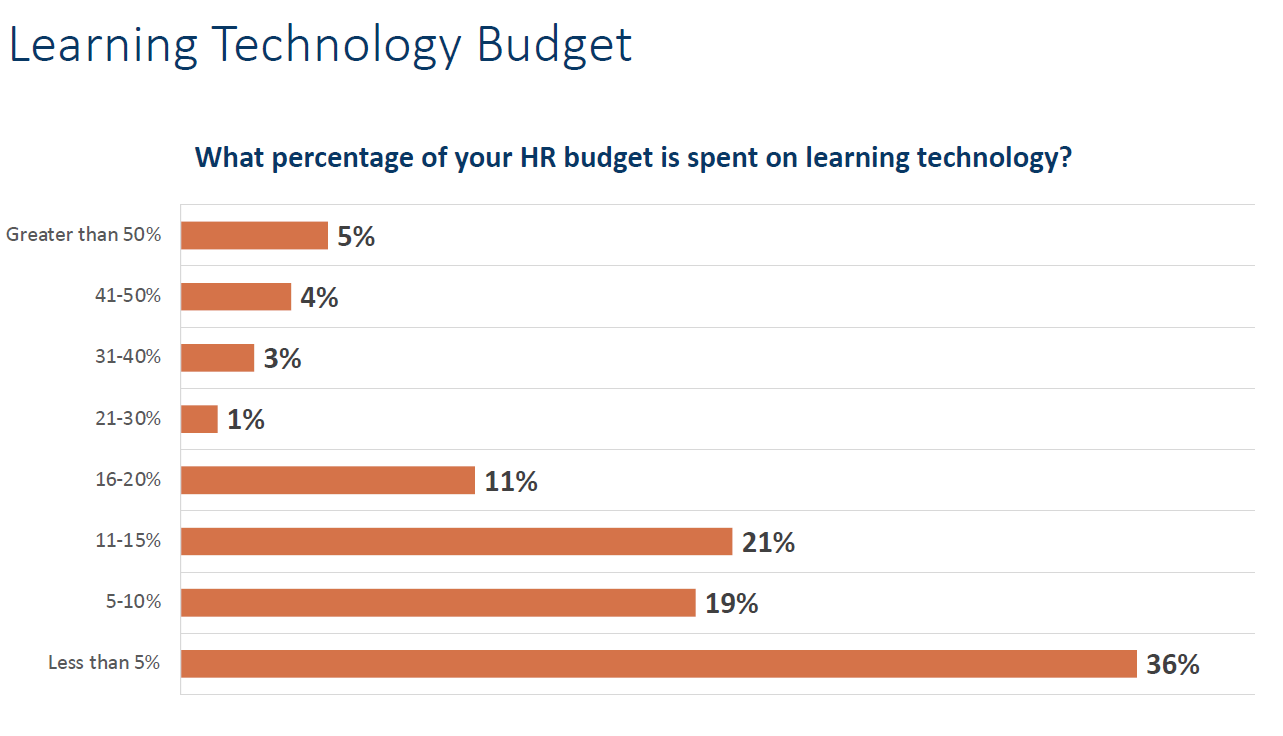
Most organizations have started thinking of training and development as an investment and not a quick fix. Modern organizations don’t just build L&D strategies to educate the workforce but also align their learning initiatives with business objectives to make every dollar count.
As per Training Magazine’s 2022 Training Industry Report, in the U.S. alone, training expenditures have passed the milestone of $100 billion for the first time in 2021-2022. A Capterra survey states, 49% of organizations increased their L&D spend in 2022 — up from 41% in 2021.
But the million-dollar question is how can one calculate L&D investments to determine the performance of a training program or initiative?
Need to Calculate ROI on Learning and Development Investments

Are you confident that your L&D initiatives are working fine, and do you have the data to back it up?
Employee training or the L&D function often operates as a cost centre for the business. Especially considering upskilling and reskilling being the need of the hour, L&D investments are closely tracked by leadership of the organization.
Overall, measuring ROI in eLearning investment allows organizations to make data-driven decisions and optimize their spending on training and development.
On the other hand, it can also be a useful way of determining how well a training program or initiative is doing, and whether you should continue investing in that program or look for more rewarding alternatives.
Employee training is an integral part of business success. That is why leaders are keen on understanding if the money they spent on training is worth it. These numbers are extremely fundamental when you have to defend the spending and justify funding requests at higher levels in the organization.
So, to make better L&D decisions and invest in the right training programs with the potential to derive maximum benefits, it is essential to keep a tab of the ROI on L&D investments.
Understanding the Top Drivers of L&D Measurement
Learning and development often offer results that are intangible, but powerful enough to make an impact on the bottom line of the business.

According to a Brandon Hall Group Learning Measurement Study, there are a few drivers (mentioned in the above image) that deserve a second look.
How to Calculate ROI in Learning and Development Investment
The Kirkpatrick model has been used as an ROI evaluation instrument for L&D initiatives for decades. It is a model primarily focused on four levels called Reaction, Learning, Behaviour, and Results. Often associated with filling smile sheets, the Kirkpatrick model typically contains parameters or questions such as:
- Was the training engaging?
- Was the method of training or style suitable to you?
- Would you recommend this training to a colleague or friend?
These metrics indeed are useful, but at the same time it is vital to show monetary benefits too. So how do you calculate the actual ROI in eLearning?
There are different ways to calculate ROI, but the most common method is to use this formula:
ROI = (Benefits – Costs) / Costs
To deploy this formula to calculate the ROI of an eLearning investment, it is necessary to determine the benefits and costs of the investment. The benefits can include components like increased productivity, improved performance, and reduced training costs, while the costs could include the cost of the eLearning program or system, as well as any additional costs such as employee training and support.
Here is an example that explains the method to calculate the ROI of an eLearning program:
Benefits: Increased productivity (estimated at $100,000 per year) and reduced training costs (estimated at $50,000 per year)
Costs: Cost of eLearning program ($20,000) and additional costs ($5,000)
ROI = (($100,000 + $50,000) – ($20,000 + $5,000)) / ($20,000 + $5,000) = 150%
In this example, the ROI of the eLearning program results to 150%, which means that for every dollar invested in the program, an additional $1.50 is generated in benefits (this indeed smells like profit).
Note that this is a simplified example. There are several other factors that can play catalyst and impact the ROI of eLearning, such as employee engagement and retention, hardware, and software costs, and so on.
In a real-world scenario, it is important to have an in-depth understanding of the benefits and costs associated with the eLearning investment and carefully track the results to make sure you have the most accurate picture of the ROI.
Also, deploying multiple metrics such as employee engagement, time to proficiency, learning retention rate, time to market, employee satisfaction and feedback will give you a more comprehensive understanding of the impact of eLearning on your organization.
Pro-Tip:
Benefit-cost ratio (BCR) vs Return on Investment (ROI)
ROI is often confused with BCR, but remember, they are two different things. BCR is just the total benefits a program offers, divided by the cost of training.
BCR = Benefits of Training / Costs of Training
Whereas ROI is:
Net Benefits of Training / Costs of Training x 100
Sneak Peek at the Pattern of Learning Technology Investments
Investing in the right technology often helps reap higher returns. Similarly, investing in learning technology can play a game changer. It has the potential to help businesses overcome newer challenges by offering enhanced learning and skill-building opportunities.

The Brandon Hall Group findings presented in the image above help get a clear picture of the percentage of the HR budget spent on learning technology.
End Note
One of the biggest challenges businesses come across while delivering impactful training results is the inability to measure the ROI and failure to demonstrate the impact of training in a quantifiable format. This works as a barrier and holds businesses from identifying the future skills they need the workforce to develop on.
The sad part is most organizations are only focused on intangible metrics that fail to provide enough insights. Well, we do not say learner feedback is not a critical factor to consider. However, when the business arena is full of cutthroat competition, it is time to move beyond the feedback sheets and look for options that show more potential.
Harbinger has worked on several eLearning projects that have helped clients improve learner engagement and retention and increased go-to-market speed and customer acquisition, indirectly leading to a better ROI on learning investments.
Write to us at contact@harbingergroup.com if you would like to explore our services or talk to experts.






